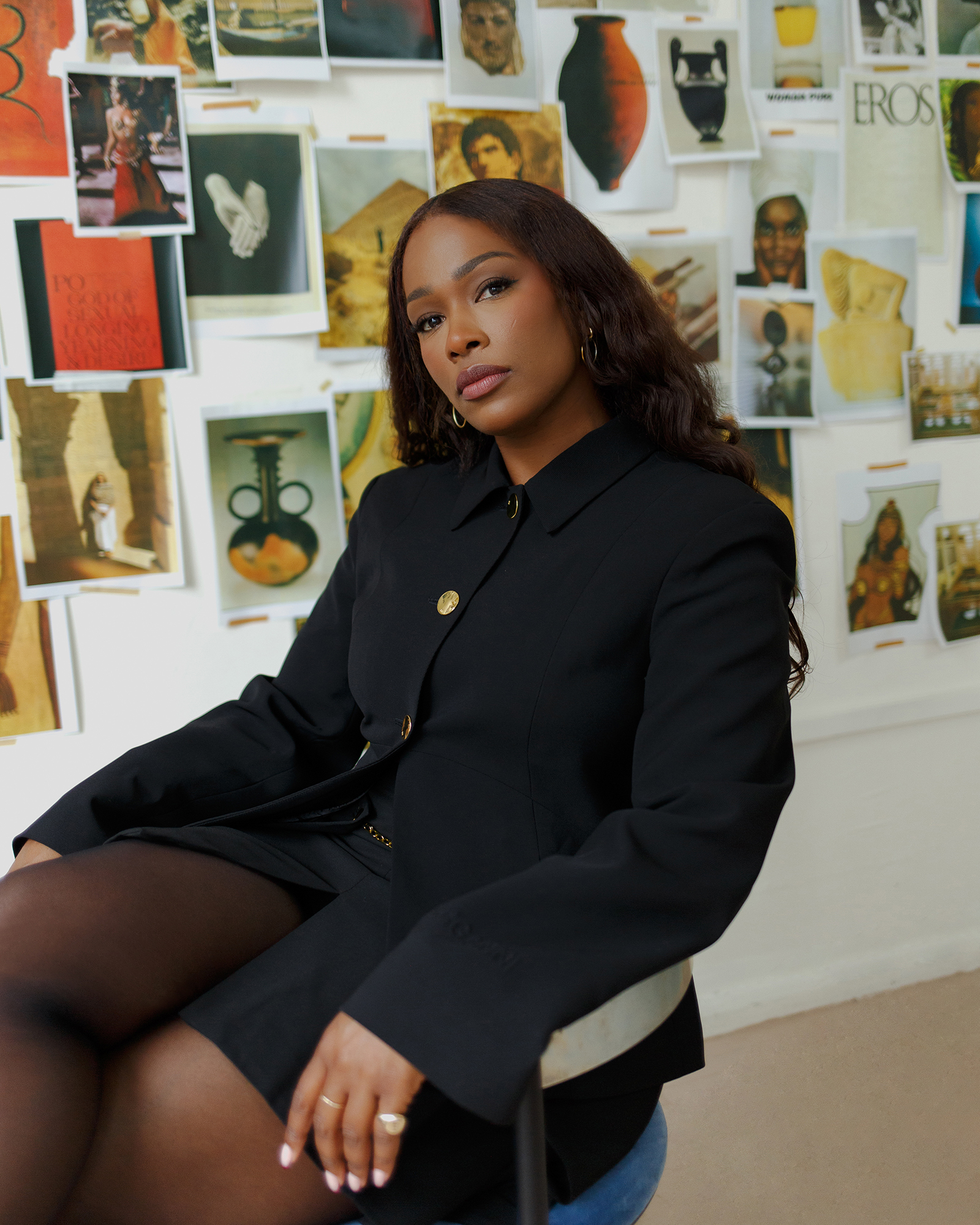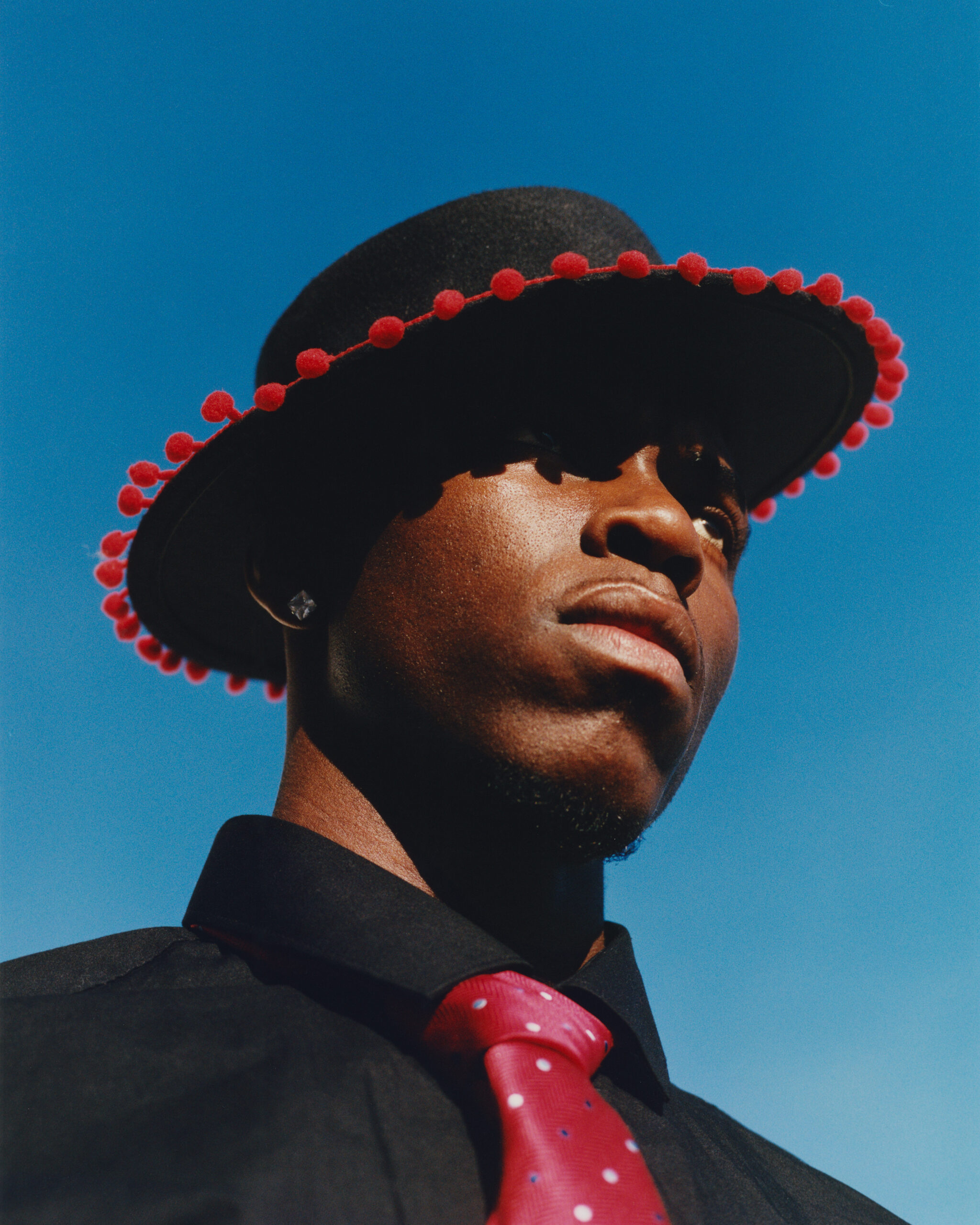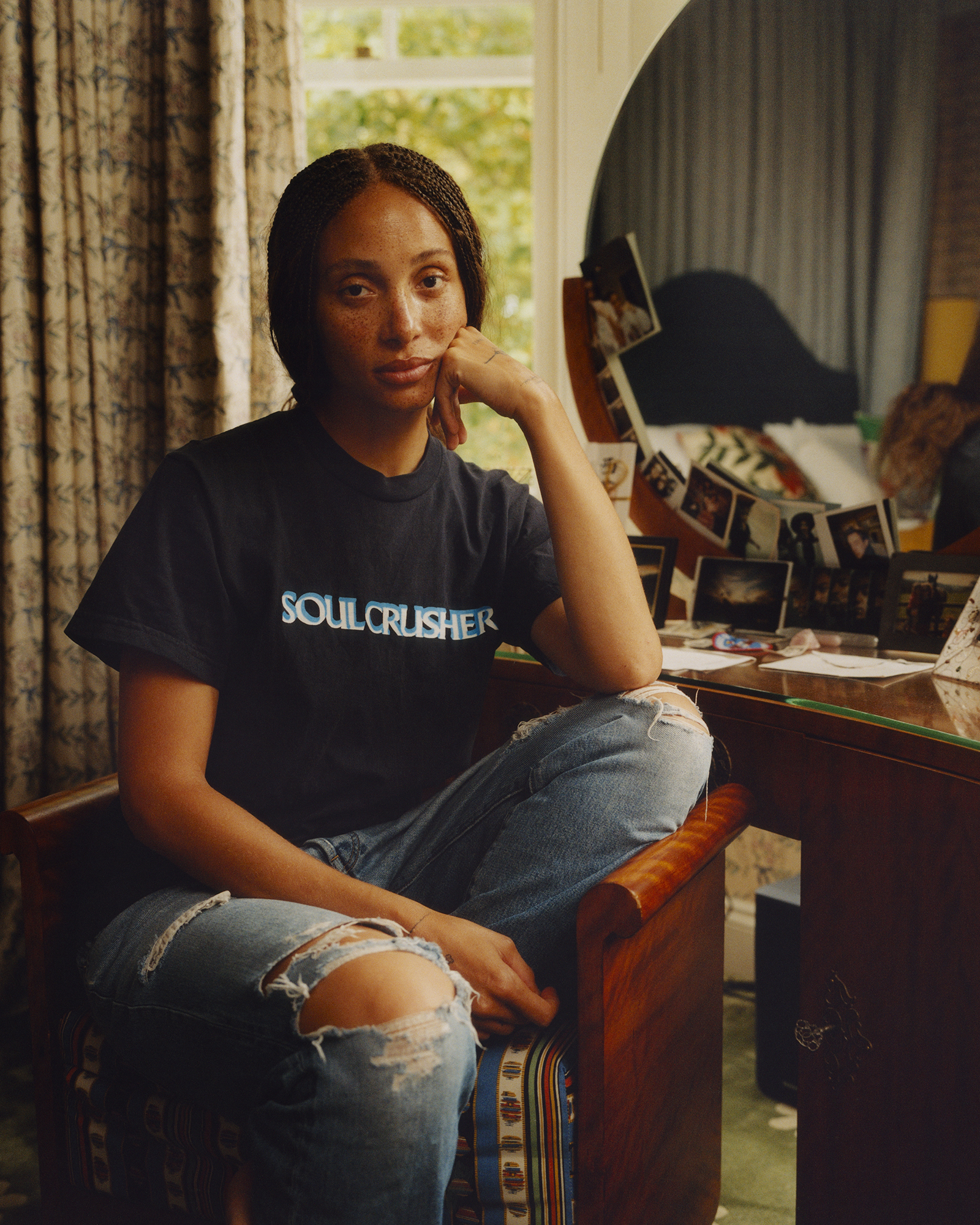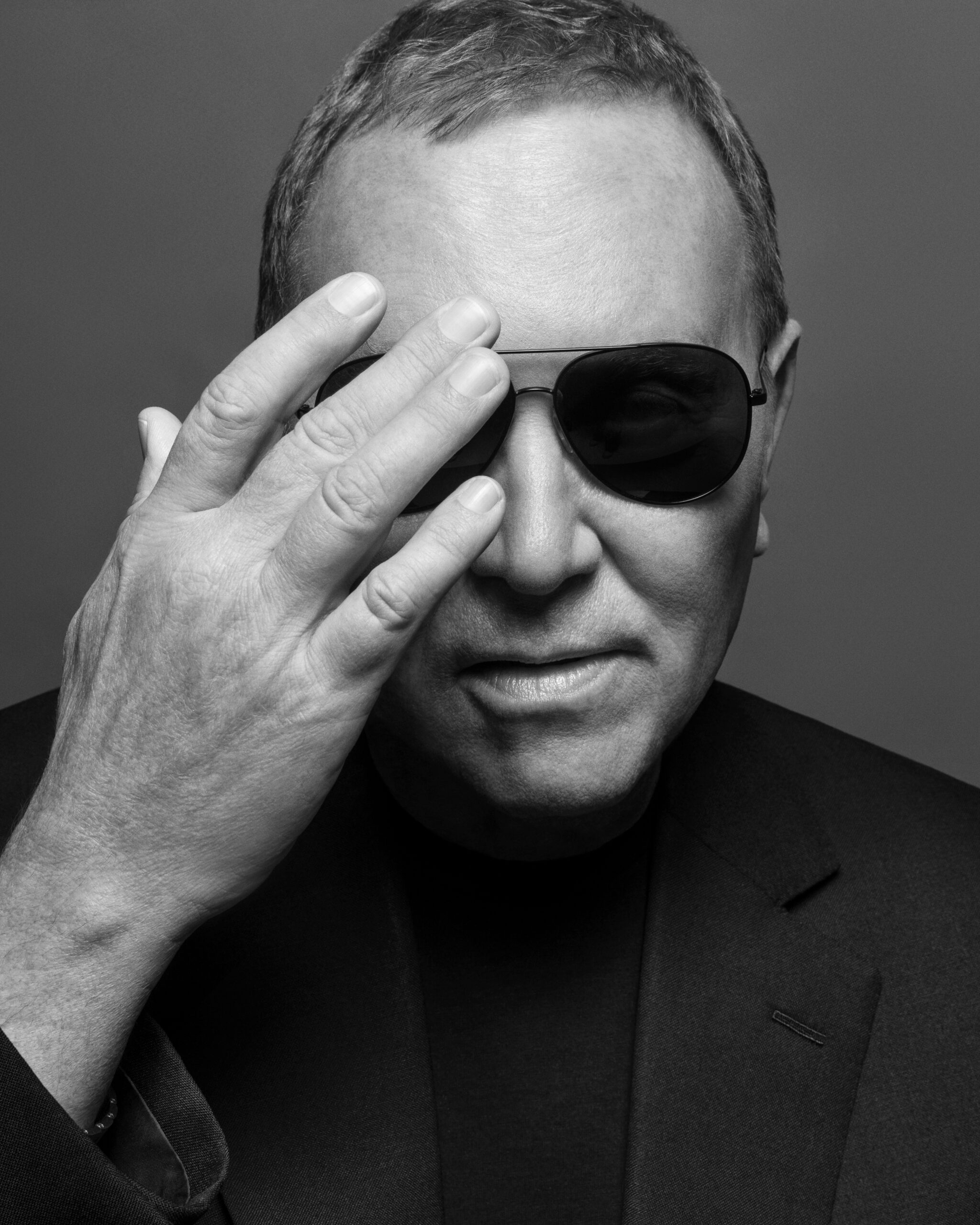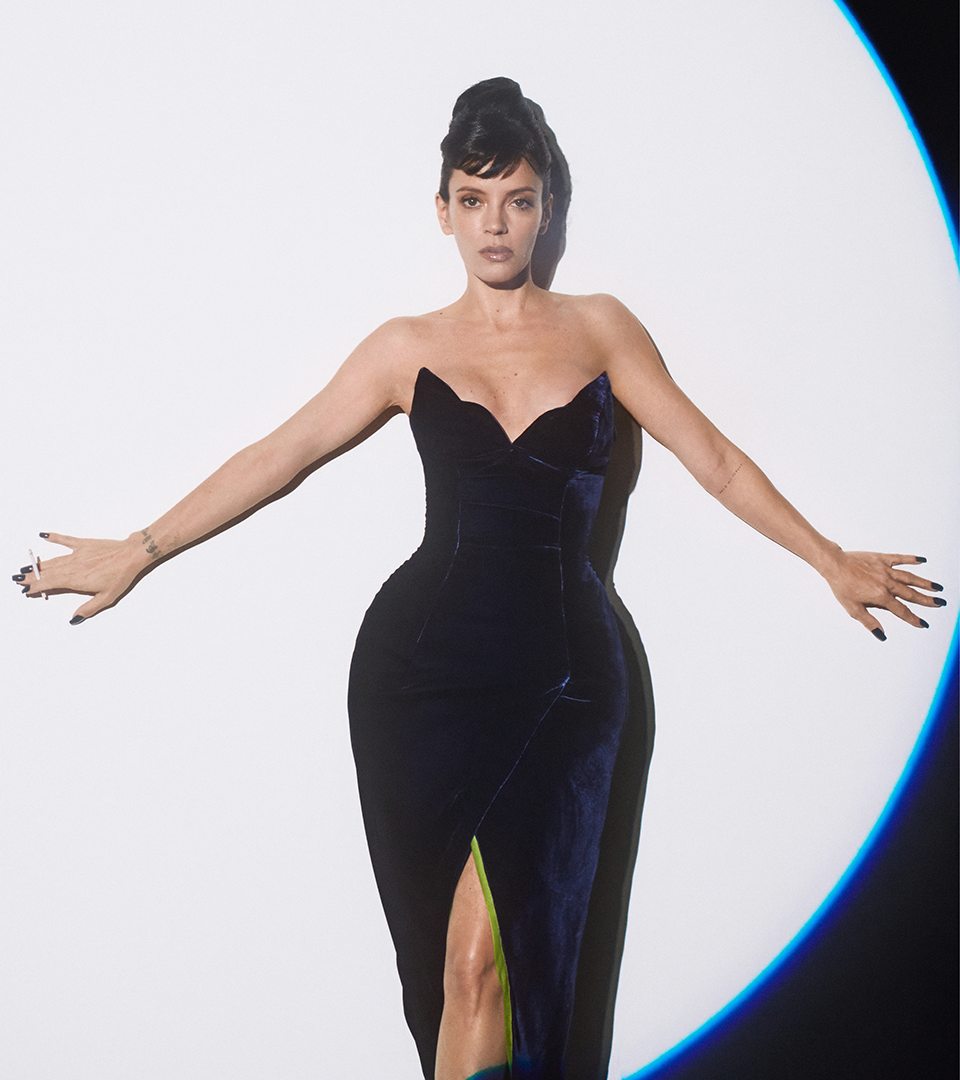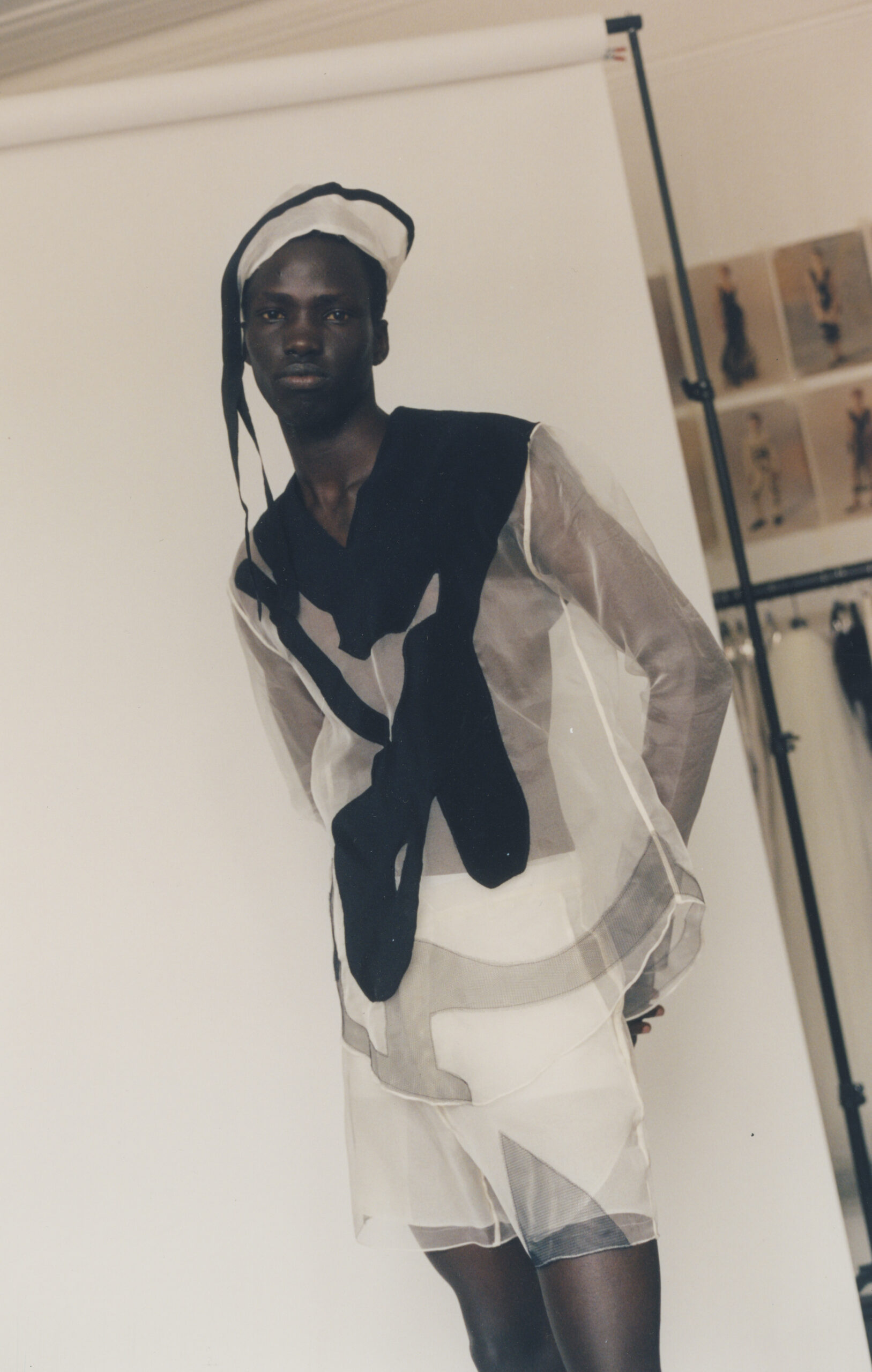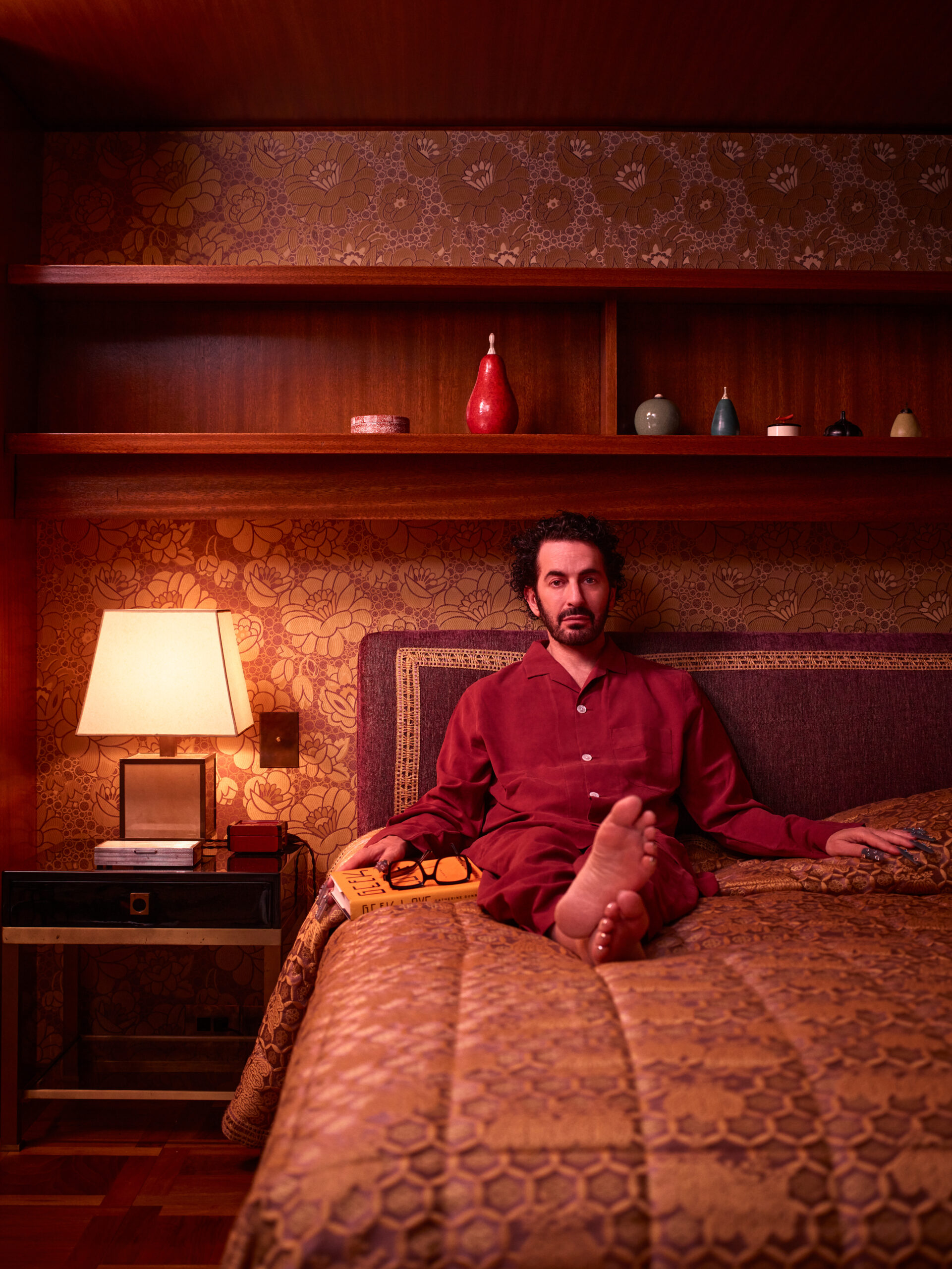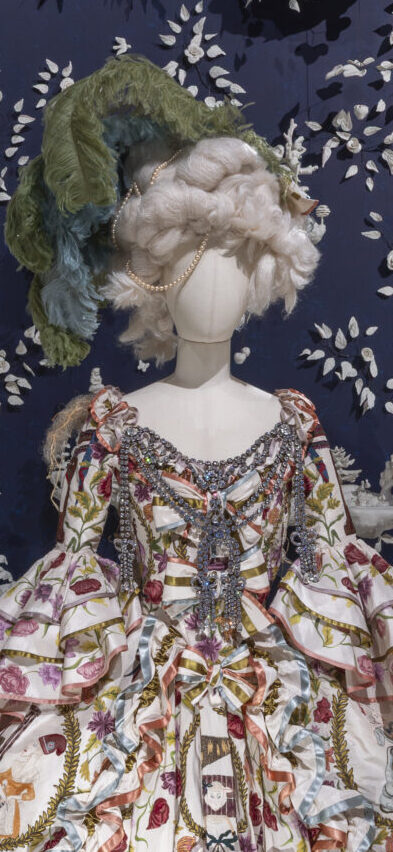
Victoria and Albert Museum
The Fantasy and Reality of Fashion’s First Influencer:
Marie Antoinette Style Opens at the V&A
At the Victoria and Albert Museum’s new Marie Antoinette exhibition, the only complete gown that was worn by France’s ill-fated queen is an unadorned, loose-fitting linen chemise from her time in prison ahead of her execution on October 16, 1793.
The tiny, ethereally transparent shift is displayed alongside the charred remains of a French Revolution guillotine and a touching memorial locket containing the hair of herself and her youngest son, Louis Charles. Displayed in a confining, red-walled room, these objects deliver the brutal reality of the tragic end of the most scrutinized queen in history, and of the human being behind the “Let them eat cake” myth.
They stand in stark contrast with the splendid display of spectacularly beautiful gowns in the rest of the exhibition, which runs until March 22, 2026. For, of course, Marie Antoinette is also widely recognized as the most fashionable queen in history. Her ultra-luxe, ultra-feminine style influenced 18th-century fashions and has continued to inspire designers ever since.
Marie Antoinette’s quest is one that
resonates powerfully with our own generation’s ideals of individuality, self-expression and freedom. And the beauty of her style has ensured it remains eternal.
— Exhibition curator Sarah Grant
Exhibition curator Sarah Grant says that tension between reality and fantasy is at the heart of Marie Antoinette’s life and legacy: “Her life is the stuff of fiction, a series of astonishing and ever more tragic events played out against the tumultuous background of one of the most seismic episodes in history,” she says. “Her legacy and style have substance because they are inflected with a note of the tragic reality.”
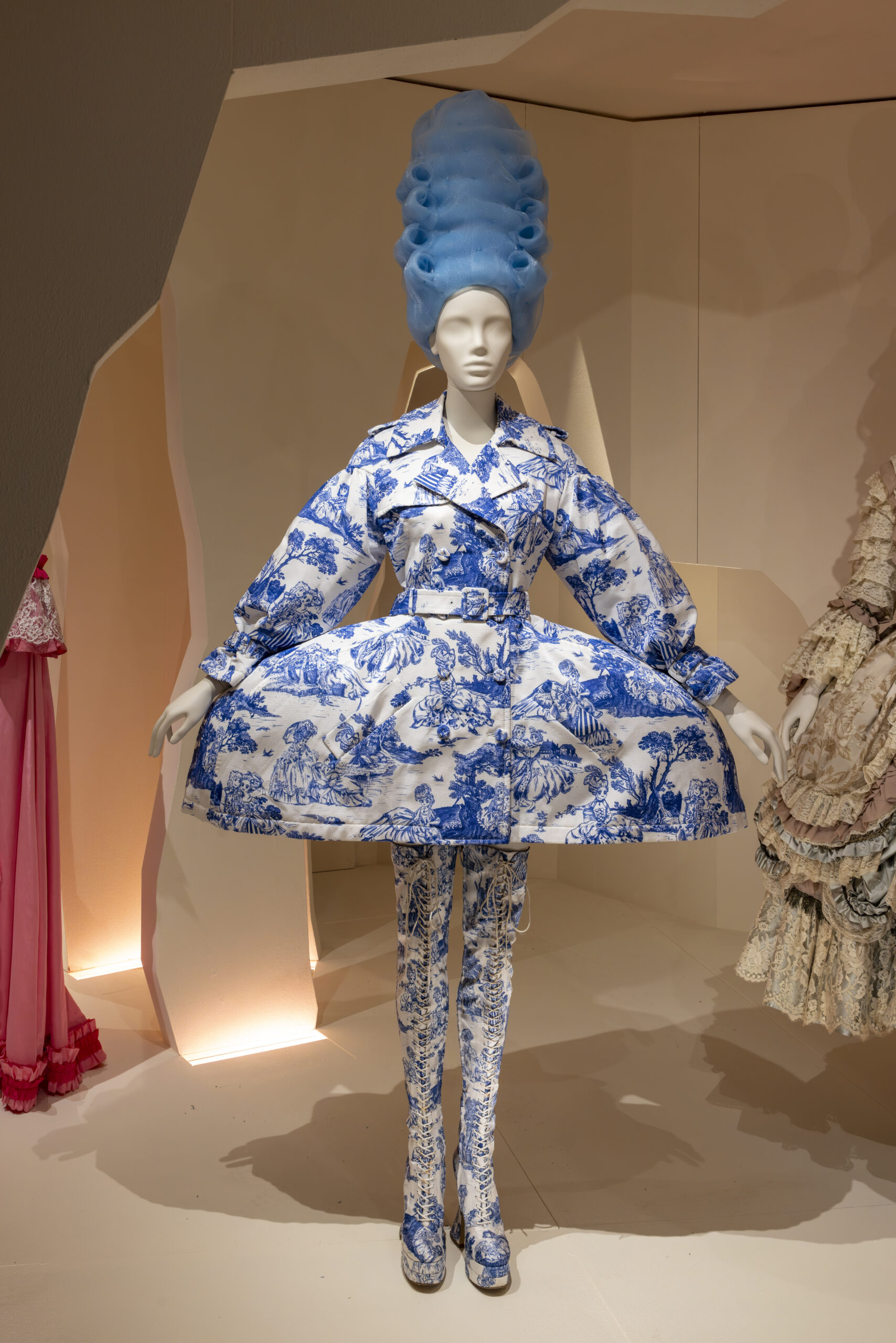
Victoria and Albert Museum
From the costume balls of the 19th century to Madonna performing with powdered wig and fan at the 1990 MTV Awards to creations by contemporary couturiers including John Galliano, Karl Lagerfeld and Alessandro Michele, the French queen’s elaborate dresses and equal love of performance and diamonds and pearls have become a cultural signifier for unmitigated beauty on the one hand, frivolous excess on the other.
For Grant however, her style always carries with it the weight of her tragic circumstances. “Without that, it is possible that the style could be entirely superficial and inconsequential. The at-times OTT approach of contemporary interpretations does not in my opinion undermine her broader and considerably complex legacy.”
Thanks to the looting that took place after the French Revolution, only fragments remain of Marie Antoinette’s own gowns but the V&A has assembled an impressive selection of 18th-century ensembles similar to those worn by her that give us a glimpse of the unmitigated splendour of her wardrobe. A minutely-waisted, impossibly wide-skirted 1774 wedding gown worn by the future Queen of Sweden is the closest we can get to Marie Antoinette’s own bejewelled dress of silver cloth when, aged only 14, she married the future Louis XVI at Versailles.
Nearby lie actual pairs of her own tenderly tiny shoes, including a pair of beaded silk mules with a heel that has long inspired exhibition sponsor Manolo Blahnik. The shoes he designed for Kirsten Dunst in Sofia Coppola’s 2006 Oscar-winning film Marie Antoinette are also on display, alongside the sumptuous dresses created by its costume designer Milena Canonero.
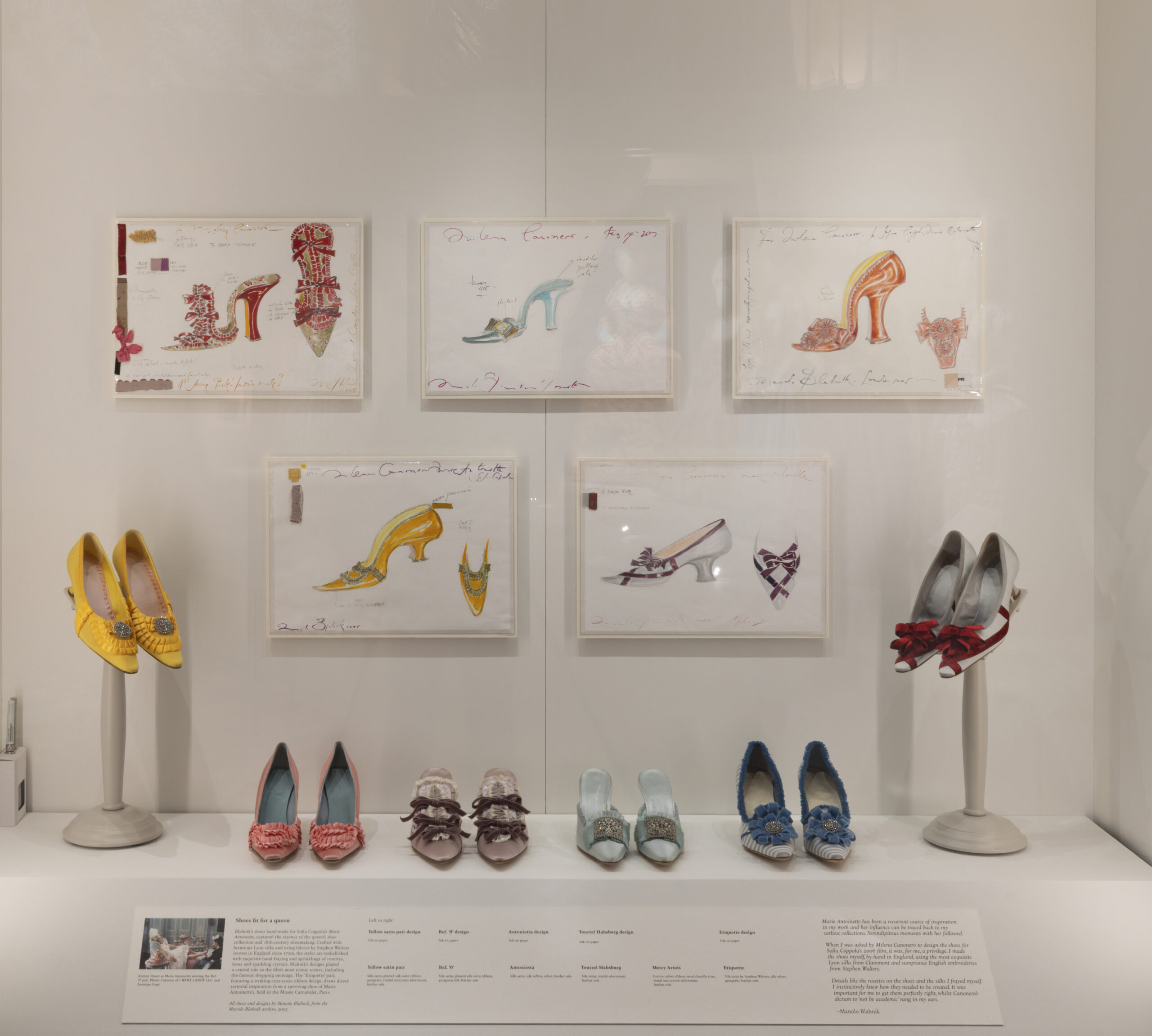
Victoria and Albert Museum
Alongside the fashion, the V&A has assembled an unprecedented selection of jewels linked to Marie Antoinette that represent the meeting point of myth and reality. The Affair of the Necklace, a complicated courtly scam for which she was blamed despite her innocence, is represented by a dramatic replica of the original jewel in question, as well as two extraordinary diamond necklaces believed to be made from that 18th century original: the Anglesey diamond necklace, which at least in part thanks to its royal provenance, sold at Sotheby’s for more than $4.8 million last November, and the V&A’s very own Sutherland diamond necklace.
Together, these necklaces serve as — disturbingly, glittering — examples of the darkly salacious gossip that grew up around the young queen, and which led to her being portrayed in court and in public as a self-indulgent sex addict who did not care about the suffering of her subjects.
Grant says that in our age of 24/7 social media scrutiny, Marie Antoinette remains as relevant today as ever: “Her story continues to appeal to us because it is a timeless one: that of a pursuit of personal happiness denied by centuries-old court protocol. Marie Antoinette’s quest is one that resonates powerfully with our own generation’s ideals of individuality, self-expression and freedom. And the beauty of her style has ensured it remains eternal.”
Despite her grisly end, for many, Marie Antoinette today of course is a symbol of conspicuous consumption, unmitigated beauty and fantastically feminine fashion. The exhibition closes with a display of fashion inspired by her image, from the candy-coloured, patisserie-inspired creations of Jeremy Scott for Moschino to Karl Lagerfeld whose Marie Antoinette-meets-punk 2012 Coco Rock Chanel collection was presented at, where other than, Versailles. Most poignant of all is a 2000 couture dress by John Galliano for Christian Dior. On one side of the richly decorated gown, she plays out her bucolic fantasy as a shepherdess, on the other she heads towards the guillotine.
Marie Antoinette was aged just 14 when she left the Austrian court to marry the Dauphin, “All eyes are on you,” were the parting words of her mother, Marie Theresa. Little did anyone know they would still be looking her way today.

